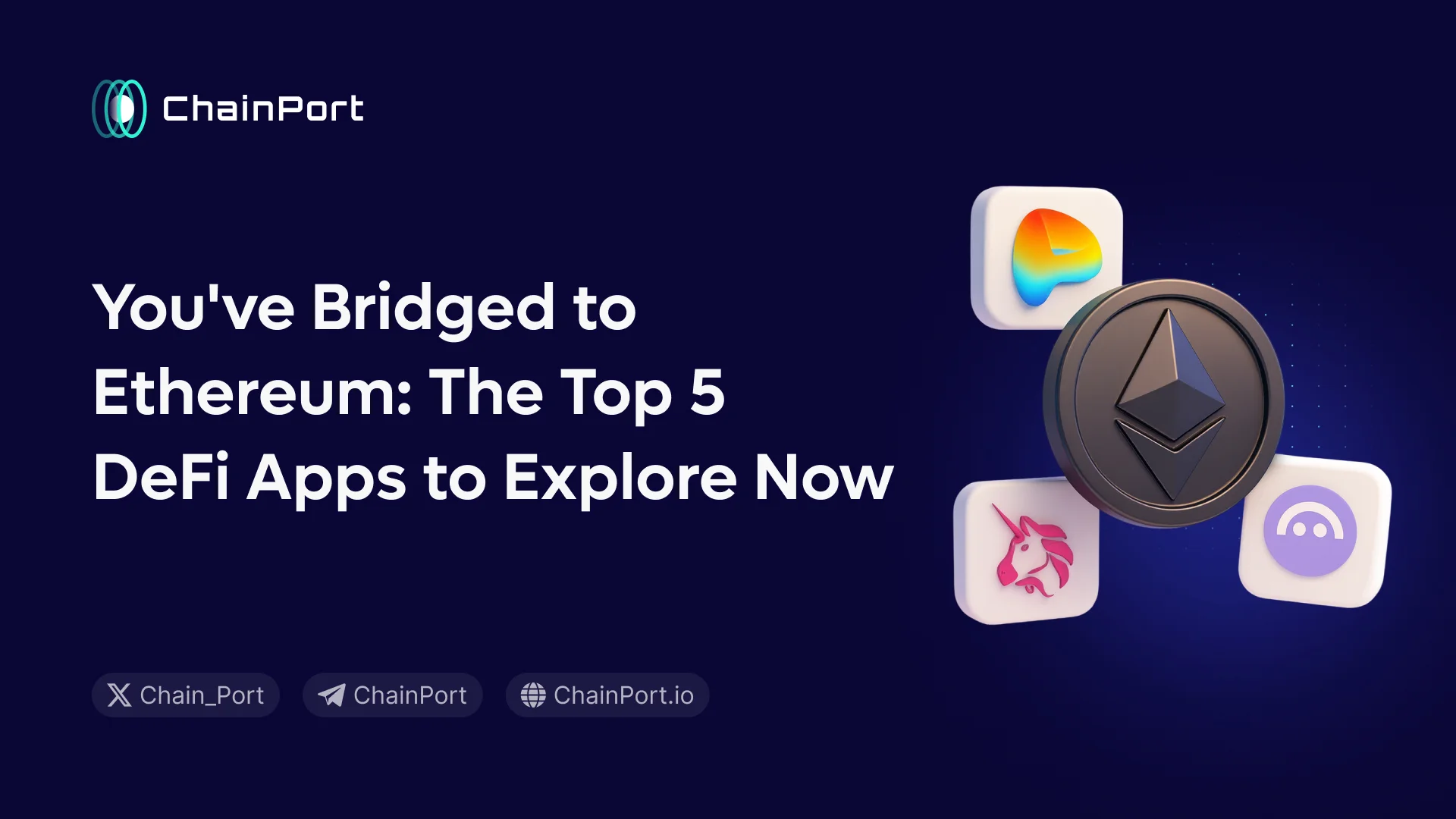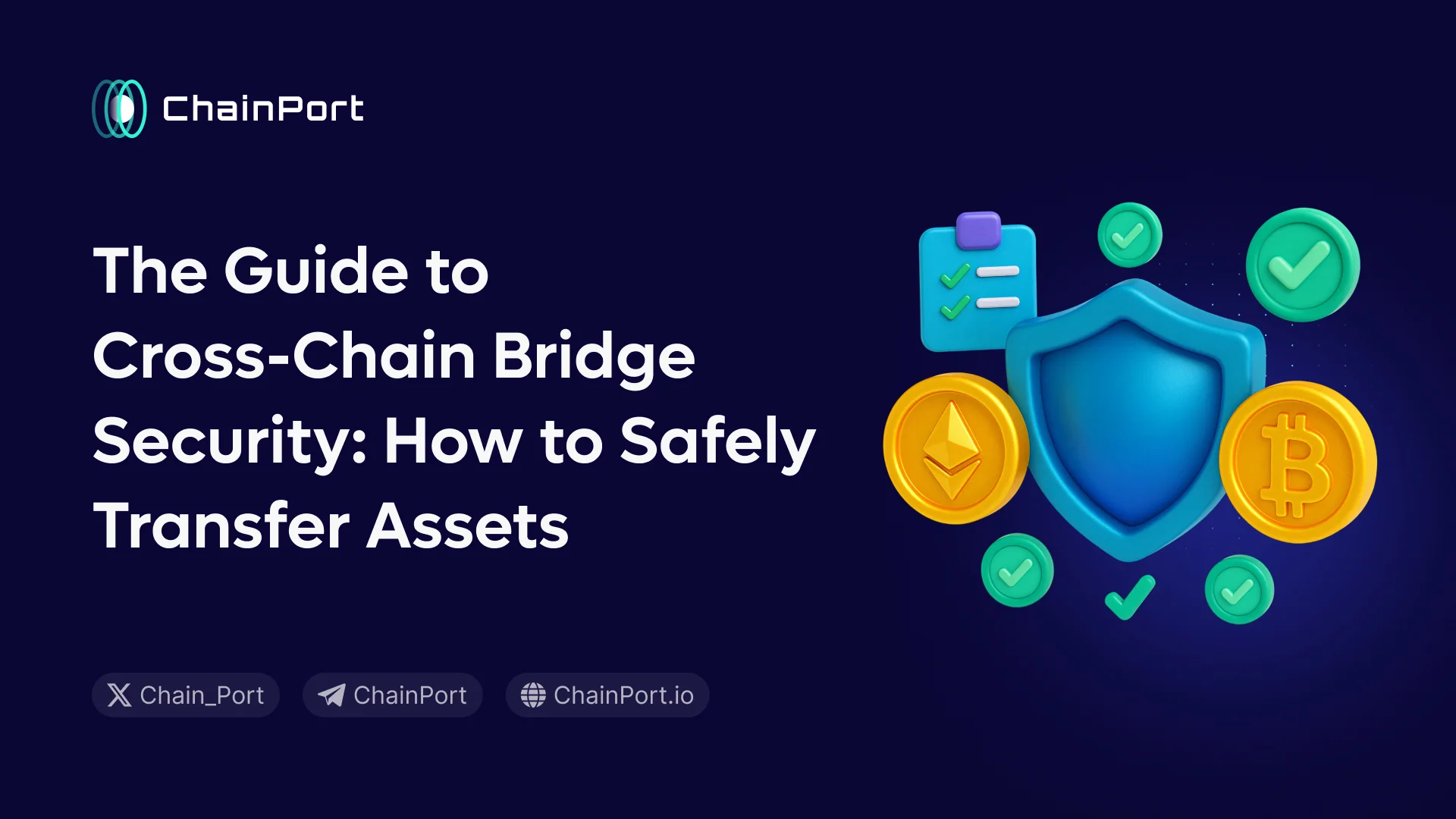tl;dr
- Ethereum’s scalability challenges led to L2 rollups and sidechains, creating a fragmented ecosystem.
- Cross-chain intents simplify bridging by letting users specify desired outcomes rather than executing swaps manually.
- Outcome-based transactions improve efficiency and user experience by abstracting technical complexities.
- Solver networks optimize transaction execution through competitive bidding for the best paths.
An Introduction to Cross-Chain Interoperability
Ethereum’s scalability challenges led to the rise of Layer-2 rollups and sidechains, designed to reduce fees and congestion. However, this created a fragmented ecosystem, making it difficult to transfer assets and information between different chains.
To address this fragmentation, cross-chain interoperability solutions like ChainPort emerged, enabling the movement of tokens and data across chains. These solutions aim to unify the multi-chain landscape and improve user experience.
While cross-chain bridges have solved the isolation of different chains and L2s, the user experience is still somewhat cumbersome for the average user. To streamline the bridging process for users, cross-chain intents were developed.
Cross-chain intents redefine token bridging by allowing users to specify their desired outcome rather than manually executing swaps. This shift enhances costs, efficiency, and automation, paving the way for a more connected blockchain ecosystem.
Understanding Cross-Chain Intents
Developed by Across, cross-chain intents prioritize user-defined outcomes rather than the specific steps needed to achieve them. This approach abstracts away technical complexities, making asset transfers across different blockchains more user-friendly.
Outcome-Based Transactions
One of the core principles of cross-chain intents is outcome-based transactions. Instead of manually navigating bridging protocols, users simply state what they want—such as swapping 100 USDC for 100 DAI—without specifying the underlying execution process. This shift enhances accessibility and efficiency.
Solver Network
A solver network plays a crucial role in executing these transactions. Operators, known as solvers or executors, compete to fulfill user intents with the best possible execution path. This competitive mechanism ensures optimal efficiency and pricing.
Atomicity
Ensuring atomicity is another key feature, meaning transactions either execute fully or not at all. This eliminates the risks of partial transfers, failed transactions, or inconsistencies across chains.
Modular Architecture
The modular architecture of cross-chain intents includes a request-for-quote mechanism, competitive relayers, and a settlement layer that verifies fulfillment and ensures relayers are repaid.
Benefits of Cross-Chain Intents
Cross-chain intents offer an intuitive way to interact with multiple blockchains by abstracting away technical complexities. Users can specify desired outcomes without navigating intricate bridging mechanisms, making transactions more accessible.
This approach enhances efficiency by optimizing execution paths, leading to faster and more cost-effective transfers. Improved interoperability ensures smooth asset movement across diverse blockchain networks, fostering a more connected ecosystem.
The Role of Solvers and Fillers
Solvers and fillers are key components ensuring efficient and cost-effective cross-chain transactions.
Role of Solvers
Solvers aggregate liquidity from multiple sources, including DEXs, CEXs, and OTC markets, to find the best execution for a user's transaction. They optimize trading paths, competing to offer the most cost-efficient and fastest routes. Additionally, solvers facilitate counterparty discovery, matching user intents with suitable liquidity sources across different chains.
Role of Fillers
Fillers act as specialized operators that use their capital to execute bridge requests quickly. They are not bridges themselves but rather agents that facilitate transactions within intent-based systems.
Fillers break down large intents into smaller transactions, ensuring smooth execution by piecing together liquidity from various providers. They focus on transaction completion, and handling fragmented orders to ensure full fulfillment across multiple platforms. By optimizing costs, fillers minimize gas fees and other expenses, making transactions more efficient.
Standardization Efforts
Ethereum aims to standardize intent-based bridging between its L1 and various L2s to enhance interoperability and reduce fragmentation. Proposed ERC standards facilitate communication between intent-based systems, ensuring a unified approach to cross-chain transactions.
These efforts improve efficiency, security, and user experience across the Ethereum ecosystem
Ethereum's Interoperability Roadmap
Ethereum’s interoperability roadmap is a strategic initiative aimed at enhancing communication and asset transfers between L2 networks. By implementing key Ethereum Improvement Proposals (EIPs), Ethereum seeks to improve user experience, security, and scalability.
Key Components and Proposals
EIP-3370: New Address Standard
This proposal introduces a human-readable address format, reducing the complexity of interacting with multiple L2 networks. By simplifying wallet management, users can seamlessly navigate different rollups without juggling multiple addresses.
EIP-7683: Cross-L2 Communication Protocol
Designed to standardize messaging and asset transfers between L2 solutions, this protocol enables decentralized and trustless interoperability. It removes reliance on centralized bridges, enhancing security while ensuring smooth cross-network transactions.
EIP-3668: Standardized Off-Chain Data Access
This standard allows smart contracts to efficiently retrieve off-chain data through "Layer 2 light clients," reducing on-chain storage requirements and improving scalability.
Phases of Implementation
Phase 1: Initial Implementation
This phase establishes the foundation by integrating EIP-3370, EIP-7683, and EIP-3668. Wallet providers, rollup developers, and application builders have begun adopting these standards.
Phase 2: Advanced Interoperability Features
This phase introduces keystore rollups and proof aggregation, further enhancing security, efficiency, and scalability across the Ethereum ecosystem.
Future of Cross-Chain Interoperability
The future of cross-chain interoperability is moving toward zero-knowledge technology, which enhances security and privacy by verifying transactions without revealing sensitive data.
As the demand for blockchain interactions grows, interoperable solutions will see widespread adoption, driving efficiency and innovation across the ecosystem. This evolution will significantly impact DeFi, enabling new financial primitives, improving capital efficiency, and fostering novel applications like cross-chain lending, decentralized derivatives, and multi-chain yield strategies.
As these advancements take shape, the DeFi ecosystem will become more interconnected, unlocking greater liquidity and utility for users across various blockchain networks.






.webp)